Limiting ecological and economic damage done by wild animals sometimes requires killing them — always a hard sell to the general public. So the federal agency tasked with this responsibility — Wildlife Services, part of USDA’s Plant and Animal Health Inspection Service (APHIS) — is unpopular. No federal or state agency gets more savagely assailed by the media and the environmental community.
Most of the criticism is based on misinformation, misconceptions and the fact that there’s scant coverage of the agency’s non-lethal measures or its work to save native wildlife, including endangered species.
If non-native wildlife is not eradicated or at least controlled, entire native ecosystems can crumble.
Consider nutria — aquatic rodents vaguely resembling small beavers or large muskrats that are native to South America. Late in the 19th century the fur industry introduced them to North America. This species, it proclaimed, would provide a fur bonanza and, on top of that, control unwanted vegetation.
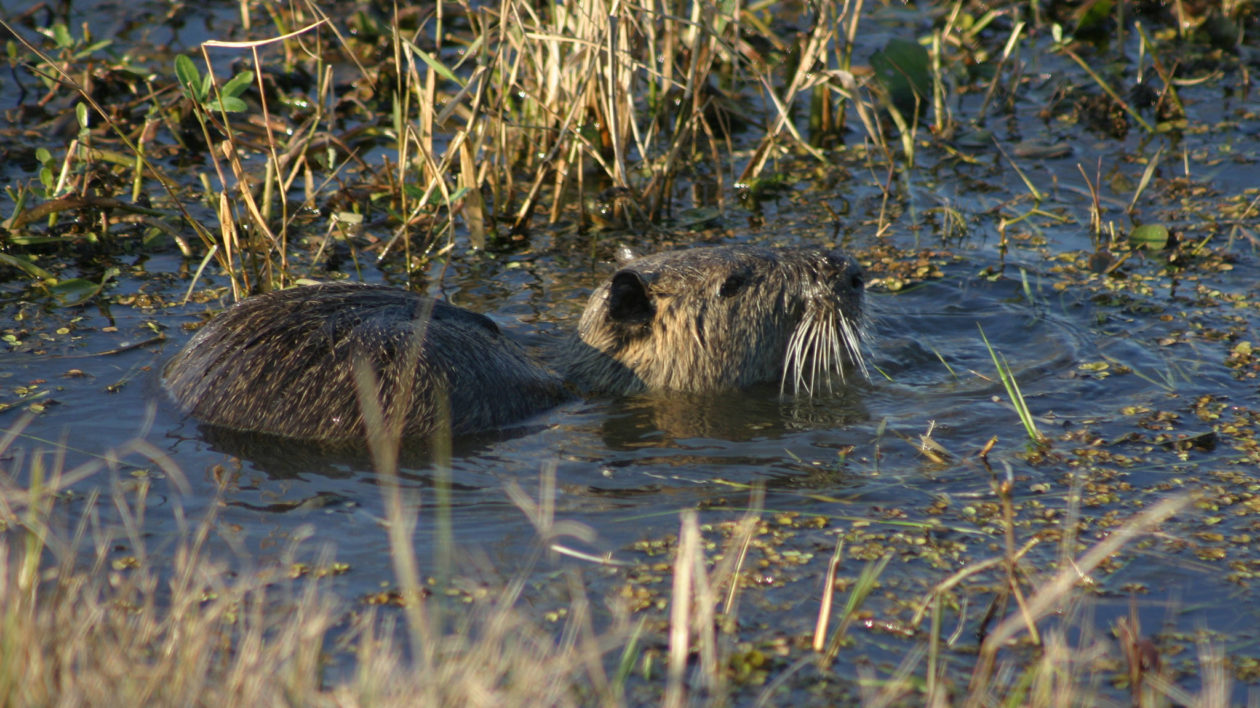
It got the fur part right. The market boomed until the 1940s, then crashed. Ranchers dumped their nutria into the wild. Today feral populations are established in at least 15 U.S. states and parts of Canada, central Asia, Japan and East Africa.
Failing to distinguish between unwanted and wanted vegetation, nutria chowed down on both. Unlike our native aquatic rodents they devoured roots and rhizomes, preventing regrowth. They converted marshes to eroding, subsiding mudflats. Their burrows collapsed dikes and levees.
At Blackwater National Wildlife Refuge on Maryland’s eastern shore nutria, assisted by rising sea level, destroyed 5,000 acres of coastal wetlands.
My son, Dr. Scott Williams, now a deer biologist with the Connecticut Agricultural Experiment Station, spent the summer of 1997 working at Blackwater as the Youth Conservation Corps leader. Part of his job was shooting nutria. It was like playing Whack-a-Mole. “During the day I’d see literally hundreds swimming in the flood-control ditches,” he recalls. “I remember staff pointing out where salt marsh used to be.” Nutria can attain sexual maturity in four months and produce litters of 4 to 13 young three times a year. Eradication, even effective control, seemed out of the question in 1997.
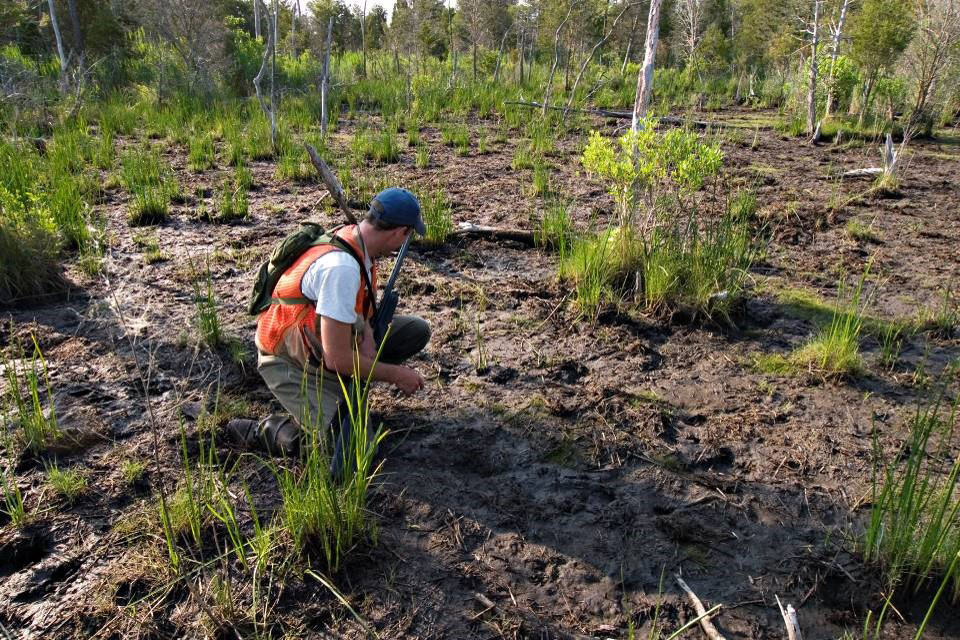
First-Ever Eradication
And yet, thanks to Wildlife Services, eradication may have been achieved — not only at Blackwater but throughout the entire Delmarva Peninsula from Maryland to Delaware to Virginia.
“It’s absolutely amazing how effective the program has been,” declares Matt Whitbeck, supervisory wildlife biologist for the Chesapeake Marshlands National Wildlife Refuge Complex. APHIS (Wildlife Services) is out there every day looking for nutria, and they haven’t seen one in three years.”
Still, no one is declaring victory because until this year budget restraints have limited the size of Wildlife Services survey crews. “A few surviving nutria can quickly undo decades of hard work,” says Whitbeck. “The worst possible outcome would be to get this far and send everyone home before eradication was complete.”
Wherever nutria were eliminated before significant erosion, marsh recovery was swift and spectacular. “The really great news,” says Maryland DNR’s invasive species biologist Jonathan McKnight, “is that the plants that were originally there came back. When we saw all that damage we thought, ‘Oh my God, this is going to fill up with phragmites.’ But if you get nutria in time, the native seed bank — typically three-square grass — is still there.”
In the 1990s a broad partnership — the U.S. Fish and Wildlife Service, Wildlife Services, resource agencies of Maryland, Delaware and Virginia, and landowners including The Nature Conservancy — set about devising a strategy for eliminating nutria from the Chesapeake.
The first-ever eradication of nutria had recently been accomplished in the United Kingdom, so the partners consulted with Dr. Morris Gosling who had led that effort.
A ban on leghold traps handicapped Gosling’s team by forcing it to use floating live traps. On the other hand, the UK’s marsh system was smaller and less complex than the Chesapeake’s. And the Ministry of Agriculture, Fisheries, and Food was able to do something U.S. managers can’t — guarantee trappers that, no matter how swiftly they finished their work, they’d get paid for the project’s projected duration — 10 years. That motivated them to complete the job in eight.
Dan Murphy, who directs habitat conservation for the Fish and Wildlife Service’s Chesapeake Bay Field Office, told me this: “Gosling advised us that if you’re doing eradication rather than control, you can’t pay trappers per nutria in what amounts to a bounty system because those folks aren’t going to spend increased time looking for the few remaining animals. You need a salaried staff of professionals looking for that last nutria.”
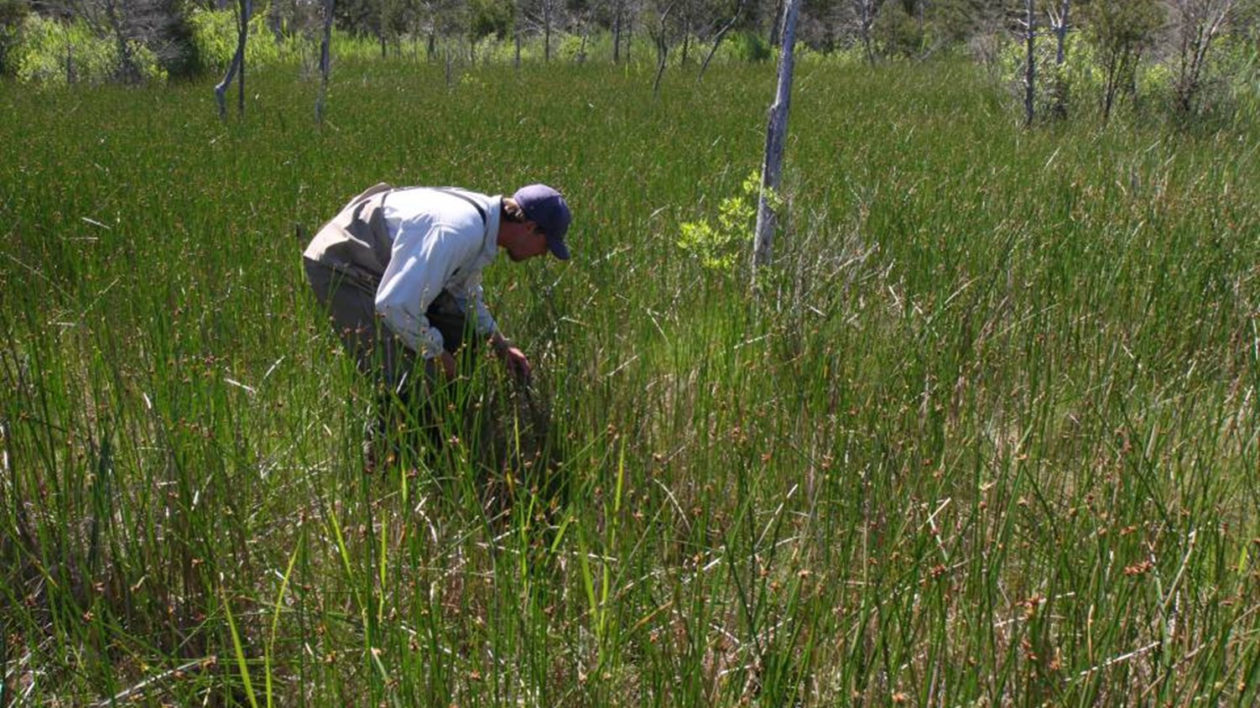
Proving Non-Existence
So in 2002, with U.S. Fish and Wildlife Service Funding, the partners hired Wildlife Services.
“We try to bring as much attention to this project as we can,” says Murphy. “Hopefully the word’s getting out that APHIS [Wildlife Services] is doing some really good stuff here. This may be the most successful aquatic mammal eradication program ever. And it’s thanks to dedicated APHIS professionals out there working on the ground in all kinds of weather.”
“It’s really difficult to prove something isn’t there,” remarks Maryland DNR’s McKnight. “I can’t prove Bigfoot doesn’t exist.”
But proving that nutria no longer exist in the Chesapeake is the task now confronting the partners. “In order to do that we need to have enough people out there looking for them,” says Murphy. “Our budget was declining, so we were unable to place sufficient APHIS staff on the ground. But in 2018 we got a real good boost. We think we have enough people out there now that if we don’t find any nutria after our surveillance, we’ll be fairly certain they’re gone.”
Among Wildlife Services’ more successful innovations are nutria-sniffing dogs. They were important in the early phases of eradication and essential in ongoing monitoring.
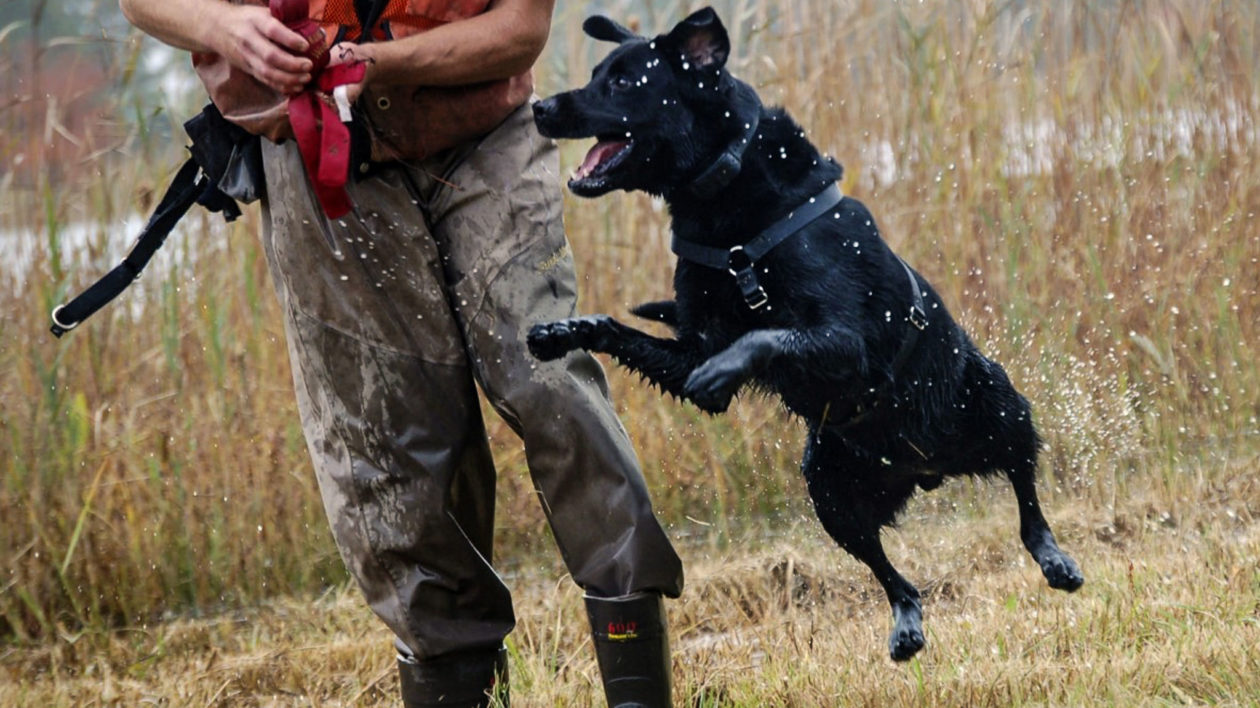
“In the beginning we had a high density of nutria,” says Wildlife Services’ Marnie Pepper, project leader for Chesapeake eradication. “You went into the marsh and that was the animal you were most likely to encounter. Folks on the project started bringing their hunting dogs; and they were able to train them pretty quickly. But when the dogs couldn’t find any more nutria there were no training opportunities.
“So in 2011 we started training dogs to find nutria scat. Scat was something we could keep in freezers and carry with us. We partnered with the National Detector Dog Training Center, an APHIS program out of Newnan, Georgia. The trainer we worked with had done projects with the Fish and Wildlife Service, which uses dogs to detect wildlife contraband.”
Today’s Nutria dogs are usually rescues. They can be any breed, but they have to be energetic so they can run all day in the marsh. When they find nutria scat — and these days it’s planted by their handlers — they’re rewarded with games of fetch and tug-of-war.
Keeva, the dog Pepper worked with, flunked out of a diabetes-alert class. But her boundless energy, which likely contributed to her departure, made her perfect for nutria monitoring. Mya, another nutria star, came from a shelter because her owners were put off by her high energy.
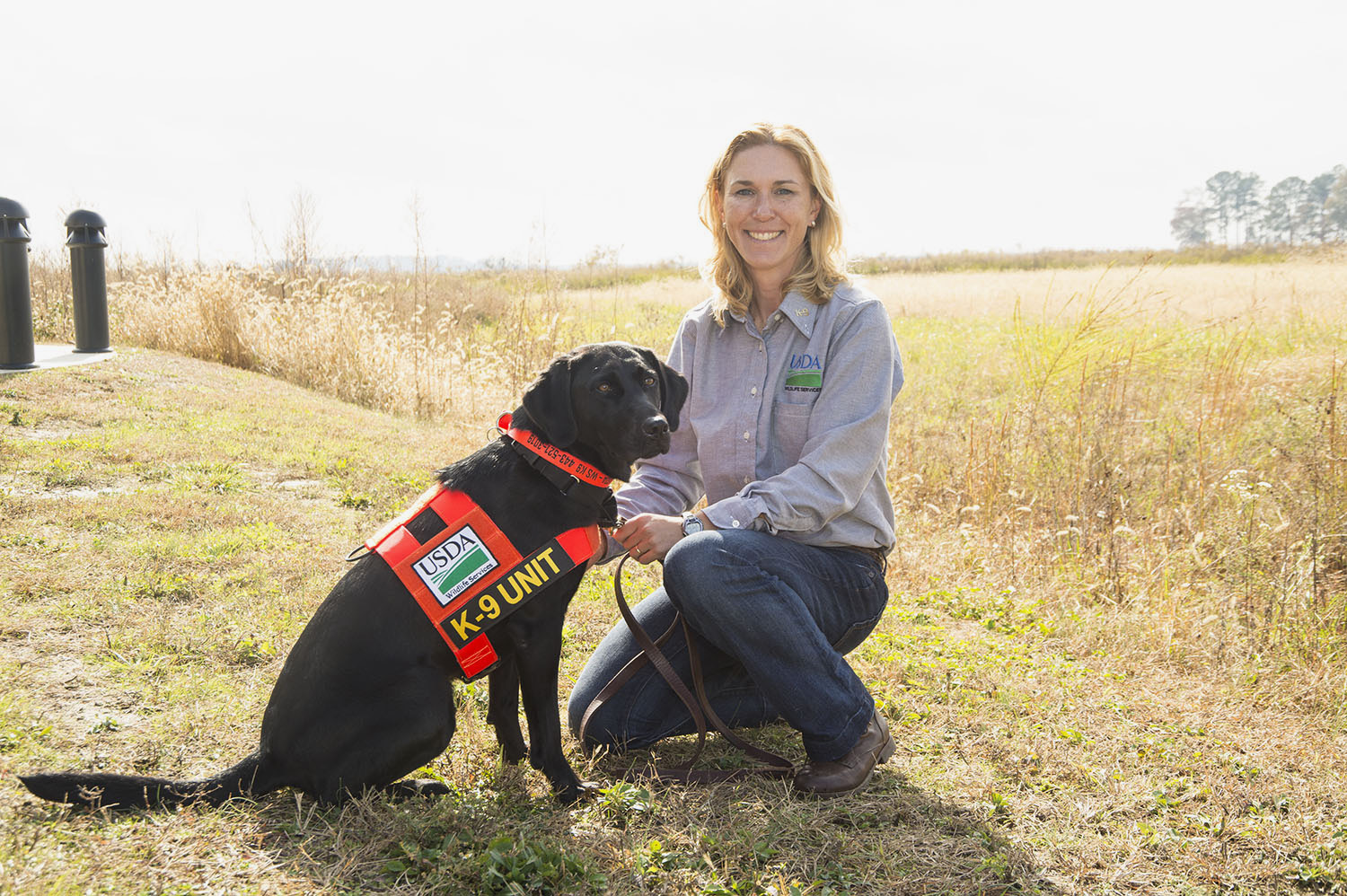
Beyond the Chesapeake
I asked Wildlife Services’ Steve Kendrot, who led the eradication project from 2002 to 2014, about early challenges. “The big one,” he said, “was assuring that private lands were accessible to us and didn’t serve as nutria refuges. I spent lots of time knocking on doors and running through project specifics with landowners at their kitchen tables. It was a monumental task. You can’t overstate the importance of local landowner cooperation; we would never have been able to achieve success without that support.
“At first there was some hesitance to embrace the federal government. But once we got some influential landowners signed on, most of the reluctant folks came along. On the few parcels we couldn’t access we were able to trap the periphery and get the animals off.”
“What about opposition from the animal-rights community to leghold-trapping and killing nutria,” I inquired?
It barely uttered a peep, Kendrot reported. Yet it stridently opposed a concurrent project in which European mute swans (also annihilating native Chesapeake vegetation) were reduced by the Maryland DNR from at least 4,000 to about 100. “There were billboards on Route 50 pleading the governor to stop mute-swan control,” he said. “The comparison between the two projects is very interesting. I think the difference is that mute swans are seen as beautiful birds, nutria as big rats.”
Then, too, because mute-swan damage occurs mostly underwater it’s less visible than nutria damage. The partners were able to generate public support with photos of fenced-off nutria “exclosures” lush with marsh plants and surrounded by mud.
Unfortunately, the kind of success seen on the Chesapeake is a national anomaly. Most other nutria infestations are at least holding their own.
So extensive are Louisiana’s marshes that eradication of the state’s estimated 20 million nutria is impossible. Now and then modest control is affected by alligator irruptions. And the $5 bounty may be marginally helpful.
Nutria, and other destructive aliens, benefit from Wildlife Service’s unpopularity. And nowhere in the nation has the agency been more unpopular than in California.
But that may be changing. Until 2017 Californians had no need for Wildlife Services’ expertise in nutria eradication because the state had been declared nutria free for the previous half century. But in that year breeding nutria showed up in the San Joaquin Valley.
Impressed by what Wildlife Services has accomplished on the Chesapeake, California officials are now leaning heavily on the agency for help. Kendrot and Pepper have been traveling to California to help Wildlife Services’ state staff build partnerships.




Excellent article! Thought you’d be interested to learn about Marsh Dog. We make dog treats using wild Louisiana nutria. http://www.marshdog.com
Well done…..
A good example of cooperation among agencies and a true understanding of the correct way to preserve ecosystems from the vast destruction that invasives cause.
This knowledge needs to be understood by animal rights groups simply because if an invasive takes over, by mistakenly protecting them, you can be killing many more species.
Now let’s remove the invasive species from Pennsylvania Ave
Completely agree with your last sentence!
Have to admit this is the first time I have read good things about Wildlife Services and this project certainly was well done. There are many, many news articles & blogs written about the lethal means
used by this agency to remove predators – would behoove them to publicize their non-lethal projects, and clean out the employees that ARE guilty of over-reach when removing wild predators(& killing domestic animals by mistake). Obviously there could be no non-lethal response to this problem (nutria).
Thanks to humans, the introduction of invasive species, animals & plants, has done much harm. Educating humans to do “better” is an uphill climb!
This piece is genuinely fascinating. And it has enough specificity and history to be really useful. I’m going to share it, though I live in a state where nutria haven’t shown up. Yet. We all need to remember that given climate change, human ignorance, and other factors, the operative word, when it comes to invasive species, is always “yet.” And we need to keep delivering that message to state and local officials when they need to hear it.